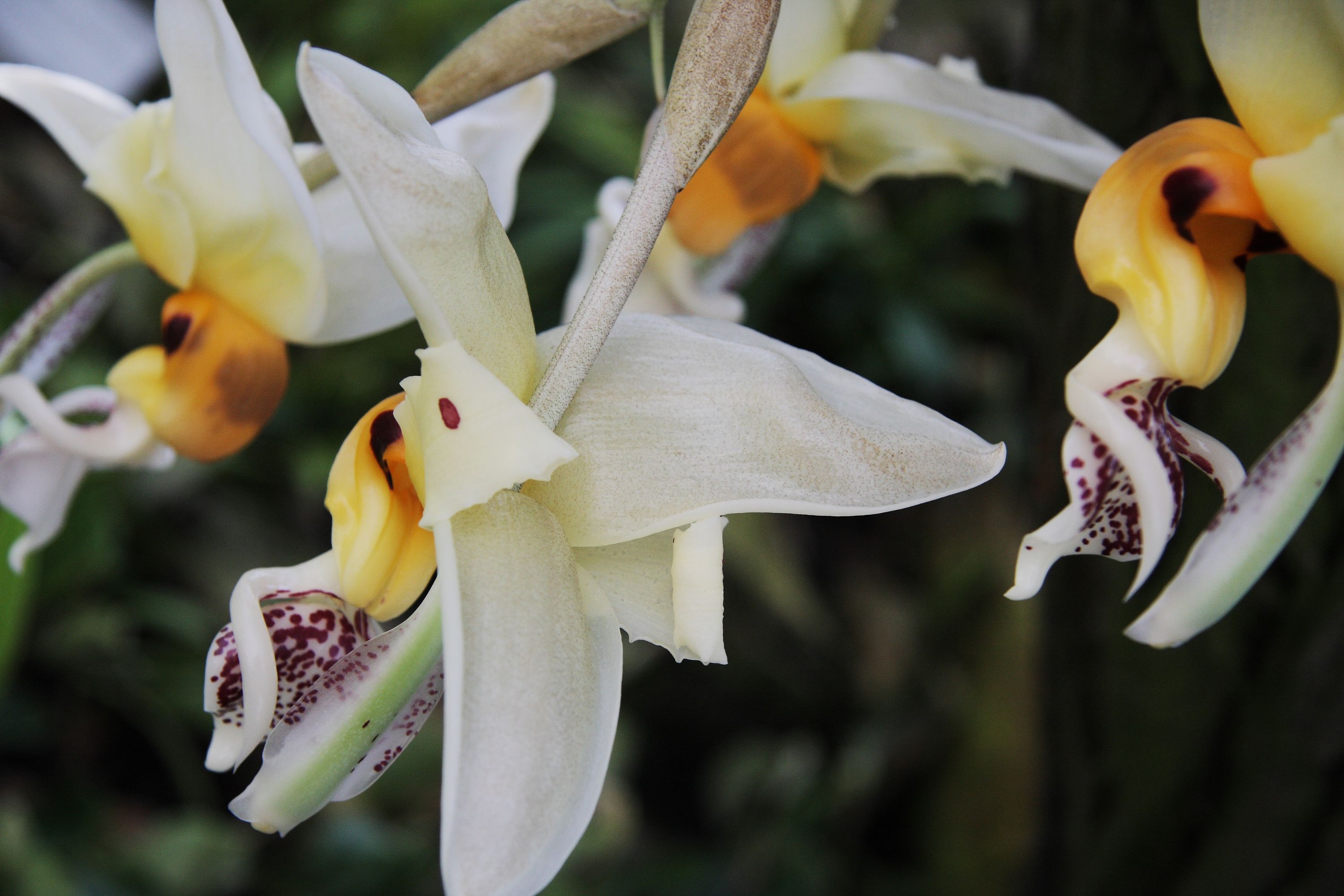Embre's stanhopea
(Stanhopea embreei)

Description
Stanhopea embreei is a species of orchid. The classification of this species was published by Calaway H. Dodson in Selbyana, 1: 128. 1975. The original isotype was collected by Dodson. Distribution: Cañar (Ecuador, Western South America, Southern America). The holotype is kept at Systematic Entomology Laboratory (SEL). Etymology: This species is named for Alvin Embree, an American orchidologist. Molecular analysis by Whitten al. revealed the major chemical component of this species fragrance is trans-methyl cinnamate. Closely related species are Stanhopea frymirei & Stanhopea jenischiana based on molecular data. Stanhopea is a genus of the orchid family (Orchidaceae) from Central and South America. The abbreviation used in horticultural trade is Stan. The genus is named for the 4th Earl of Stanhope (Philip Henry Stanhope) (1781-1855), president of the Medico-Botanical Society of London (1829-1837). It comprises 55 species and 5 natural hybrids. These epiphytic, but occasionally terrestrial orchids can be found in damp forests from Mexico to Trinidad to NW Argentina. Their ovate pseudobulbs carry from the top one long, plicate, elliptic leaf. Stanhopea is noted for its complex and usually fragrant flowers that are generally spectacular and short-lived. Their pendant inflorescences are noted for flowering out of the bottom of the containers in which they grow, lending themselves to culture in baskets that have enough open space for the inflorescence to push through. They are sometimes called upside-down orchids. The majority of species are robust plants that grow readily in cultivation. For relatives of Stanhopea see Stanhopeinae and the closely related sister subtribe Coeliopsidinae. Most Stanhopea flowers flash prominent, elegant horns on the epichile. The exception are the species; S. annulata, S. avicula, S. cirrhata, S. ecornuta and S. pulla. A second group have short or truncated horns, they include the species; S. candida, S. grandiflora, S. reichenbachiana, S. tricornis and the natural hybrid S. x herrenhusana. The structure of the labellum of this group is in general, not as complex as other members of the genus. With most Stanhopea flowers lasting three days or less, the flowers must attract pollinators very quickly. These chemical attractants are generated in the hypochile, attracting the male euglossine bees to the flower.
Taxonomic tree:







